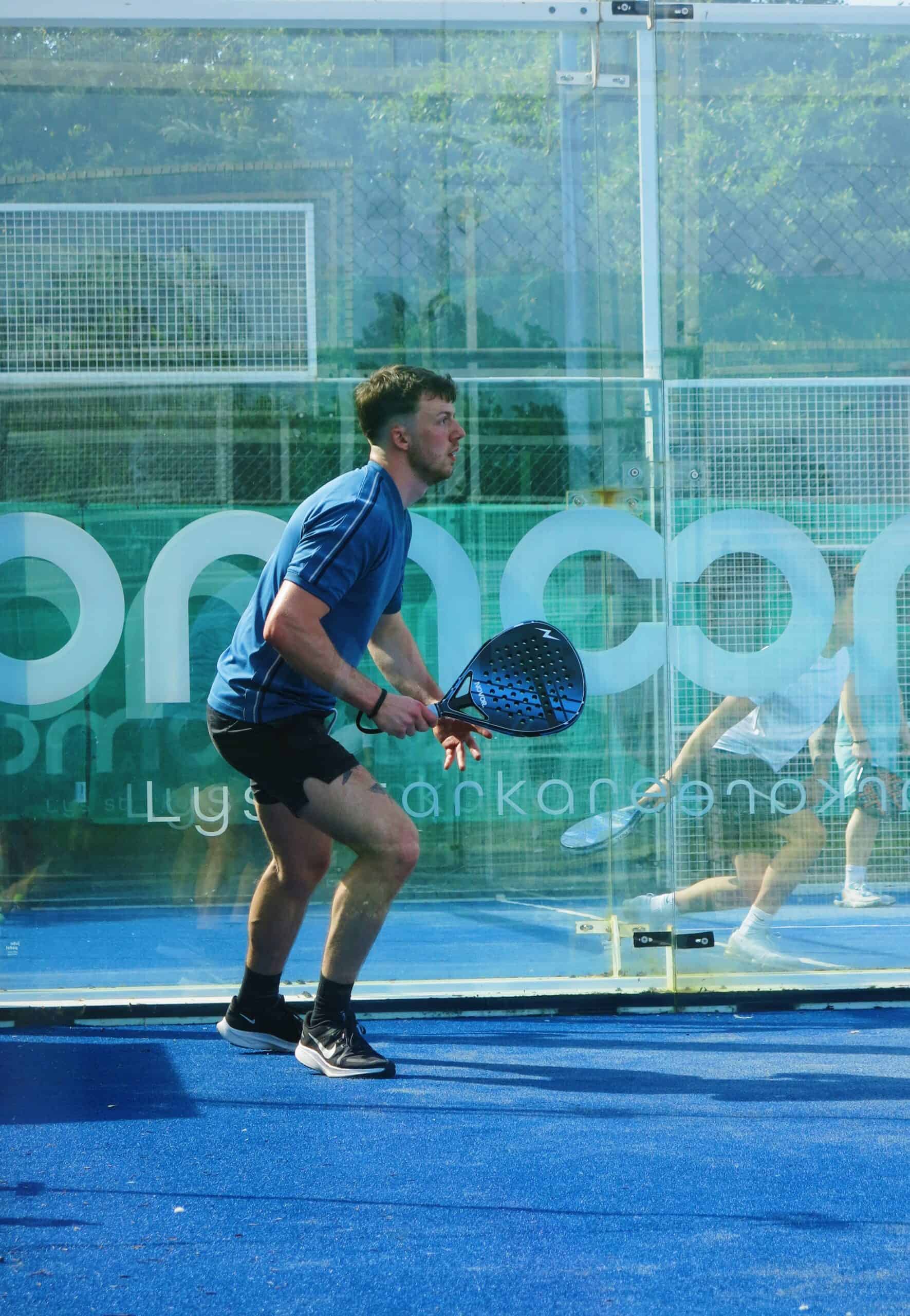
Padel, a sport rapidly gaining popularity, has captivated enthusiasts worldwide. Central to the game is the racket, what is a padel racket made of? The racket is an essential tool that significantly influences a player’s performance. But have you ever wondered what materials constitute these rackets and how they impact gameplay?
Padel rackets are typically crafted using a variety of materials:
Carbon Fibre
Renowned for its lightweight yet robust nature, carbon fibre is a preferred material for crafting high performance padel rackets which will last longer and provide better result. This material offers exceptional strength, stiffness, and responsiveness, providing players with enhanced power and precision on their shots.
Fibreglass
Fibreglass, another material, valued for its affordability. Rackets made from fibreglass offer a more forgiving feel, making them suitable for beginners although don’t tend to last very long. These rackets are typically priced between £30-£100.
Eva Foam
The core of padel rackets comprises EVA (ethylene-vinyl acetate) foam. This lightweight and flexible material helps dampen vibrations, providing players with a more comfortable feel during gameplay. Different variations of this foam exert different properties, for example the harder the foam the more powerful the racket tends to be.

Power and Control
The materials used significantly influence the racket’s performance attributes, such as power and control. Carbon fibre rackets, known for their stiffness, offer excellent power in the sweet spot, enabling players to generate powerful shots with less effort. On the other hand, fibreglass rackets provide better control due to their flexibility.
Weight and Manoeuvrability
The choice of materials also affects the racket’s weight and manoeuvrability. Carbon fibre rackets tend to be lighter, offering greater manoeuvrability and enabling players to react swiftly to incoming shots. The weight balance also plays a large role in the performance of the racket, with head heavy racket generating more overhead power for smash shots and bandeja’s.
Durability varies among racket materials, with carbon fibre being exceptionally durable and resistant to wear and tear. Fibreglass, while solid, might not withstand heavy impacts as well as carbon fibre. Regarding weight, carbon fibre rackets tend to be lighter compared to fibreglass options.
When selecting a padel racket, consider your skill level and playing style. Beginners often benefit from fibreglass rackets for their forgiving nature, aiding in learning control and technique. Intermediate and advance players typically choose carbon fibre for their performance driven characteristics.
In conclusion, the materials used in padel racket construction significantly impact performance, durability, and player experience. The choice between carbon fibre, fibreglass, or a combination of the two depends on your individual preferences, skill level, and desired playing style.
Remember, finding the right padel racket tailored to your needs can significantly enhance your game and enjoyment on the court!
Managing Director
We’re dedicated to upholding the highest standards of customer service and delivering on providing premium padel rackets. Please explore our extensive list of reviews to see what our customers have to say!
Super, top quality gear and a super helpful team. Have definitely secured my future business. 🤩
I had the chance to try the Novor padel racket last weekend and I was very surprised with the quality, weight and it’s balance distribution. Very good relation price quality and highly recommended. Very good effort and work developing their first official product by the guys of Novor!
What a stunning racket. Very good price, especially for a carbon racket, delivered in 2 days, comes with a nice bag. Beautifully designed and made, looks the business and feels very nicely weighted. Can't fault it. I just need to get better at the game to justify having such a nice piece of kit!

Elevate your padel game with Novor – Precision | Power | Performance. Unleash your potential with our padel rackets designed in London.
VirtualRock Ltd trading as Novor (™) 2023 . All Rights Reserved